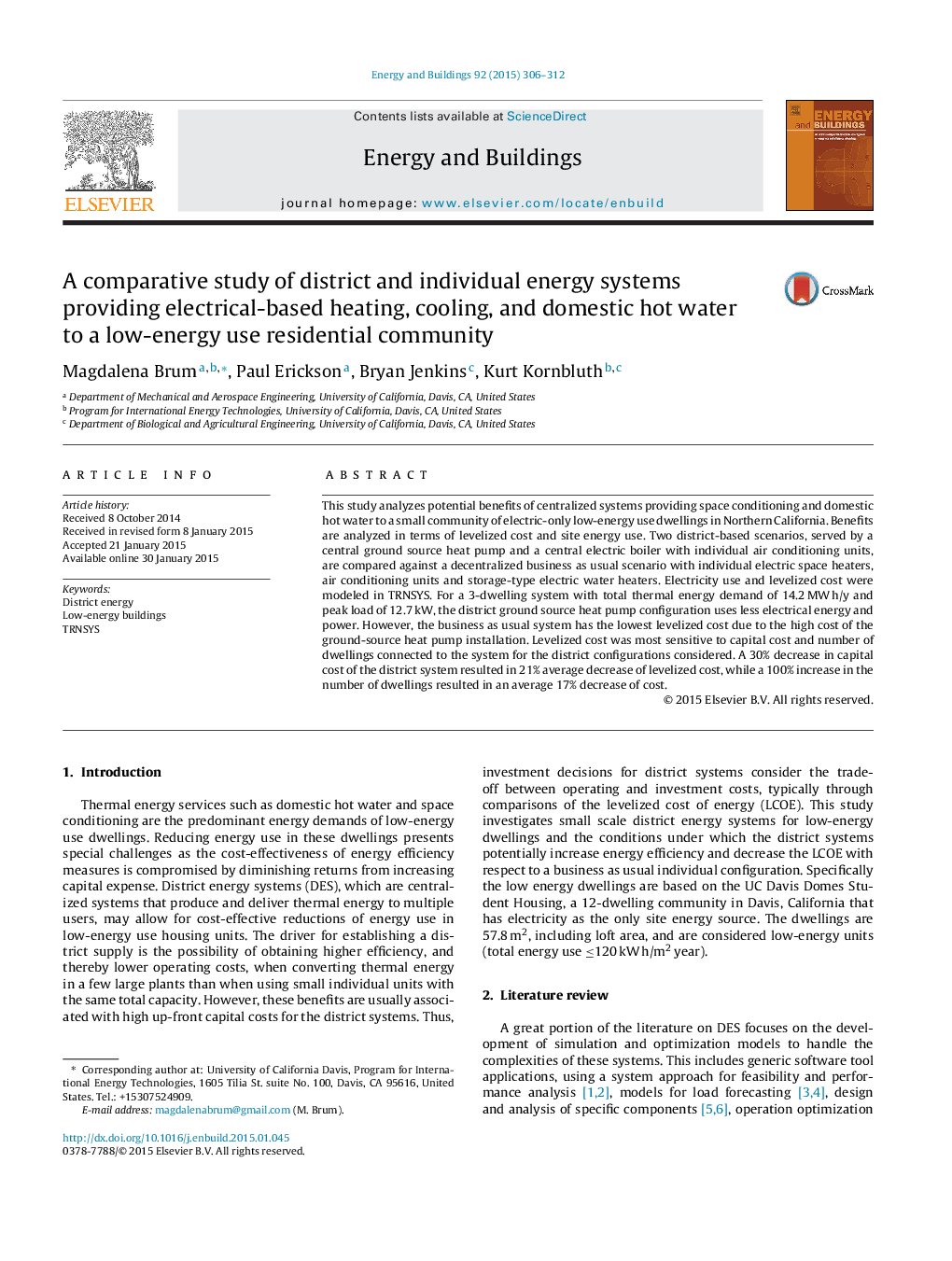| Article ID | Journal | Published Year | Pages | File Type |
|---|---|---|---|---|
| 6732134 | Energy and Buildings | 2015 | 7 Pages |
Abstract
This study analyzes potential benefits of centralized systems providing space conditioning and domestic hot water to a small community of electric-only low-energy use dwellings in Northern California. Benefits are analyzed in terms of levelized cost and site energy use. Two district-based scenarios, served by a central ground source heat pump and a central electric boiler with individual air conditioning units, are compared against a decentralized business as usual scenario with individual electric space heaters, air conditioning units and storage-type electric water heaters. Electricity use and levelized cost were modeled in TRNSYS. For a 3-dwelling system with total thermal energy demand of 14.2Â MWÂ h/y and peak load of 12.7Â kW, the district ground source heat pump configuration uses less electrical energy and power. However, the business as usual system has the lowest levelized cost due to the high cost of the ground-source heat pump installation. Levelized cost was most sensitive to capital cost and number of dwellings connected to the system for the district configurations considered. A 30% decrease in capital cost of the district system resulted in 21% average decrease of levelized cost, while a 100% increase in the number of dwellings resulted in an average 17% decrease of cost.
Related Topics
Physical Sciences and Engineering
Energy
Renewable Energy, Sustainability and the Environment
Authors
Magdalena Brum, Paul Erickson, Bryan Jenkins, Kurt Kornbluth,
